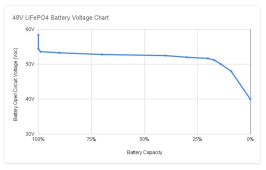SHTF Power Anyway
Power Pig
We do have a nice container of documents right next to the system and because we have multiple units, we have multiple copies of things so I can keep a copy in the house, my neighbor has a copy, our friend has a copy. lolThe BMS cut off voltage is listed in the battery specifications.. you'll have to look it up.. I remember seeing it, just don't remember what it was.
You should print out the specs, laminate them, and put them in a folder next to your off-grid system. In fact, all important information should be in a single folder where it is quick and easy to reference. While it might be cumbersome to put the entire inverter manual or battery manual in a folder, you should put the important pages in there. For example, inverter menu options, important settings, etc. And a place for you to take notes on behavior events or reminders.
I do see cut off voltages but don't see anything labeled specifically the BMS cutoff voltage. There's a "Recommended Low Voltage Disconnect" which says 48V and a "Battery Low Voltage Protection" of <45V and, finally, there's a "Battery Recovery Voltage" of 45V.



